The Secret History of Hyderabad State of the Nizam (South India; 1724 – 1948)
Last Updated on July 15, 2021 by Hamad Subani
The Illuminati infiltrates the Marathas
Until this point, there were only three forces linked to the Illuminati that were operating in the Subcontinent. The first was the Persian Cabal, linked to the Safavids of neighbouring Iran, which had haunted the Mughals from the very beginning. They would infiltrate the Mughals by marrying their women to Mughal princes. But with Mughals marrying into local Rajputs, their influence had been greatly curbed. Their last influential operative, Zulfiqar Khan had just been beheaded. Then there were the Sayyid Brothers. As venal as they were, they lacked the power to replace the Mughals. Then there were the Europeans. But the Europeans had just established a precarious foothold in the Subcontinent and were not in any position to provide support for the Sayyid Brothers.
Until this point, the Marathas were still raiders. Despite Shivaji crowning himself as king in a formal ceremony, the Marathas were more than content to continue predation on the prosperity of Mughal towns and cities through guerilla warfare and hit and run tactics. And they certainly loved collecting heavy taxes on road that linked Mughal ports and trade centers. They saw little reason to build an Empire and neither did they have the intellectual resources for developing sophisticated mechanisms of governance. Neither did they have any desire to move into North India and replace the Mughals. Such a move would deprive them of their biggest tactical advantage, their ability to use the mountains of the Western Ghats to their tactical advantage, and their intricate knowledge of the Deccan landscape. Fighting battles in the open plains of North India was clearly not an option for Shivaji, for he did did value the lives of his personnel and was careful never to expose them to undue risk.
All that would change when the Marathas would hire a brahmin named Balaji Vishwanath Bhat as an accountant. Of course, the Marathas hired brahmins for administrative work, and they loyally served the Marathas as expected. But Balaji Vishwanath Bhat was different. He was a Chitpavani brahmin, a group that descended from Jewish people who claim to have been shipwrecked on the Konkan coast a long time ago. An alternate theory is that they had deliberately entered India a long time ago for the sole purpose of conquering the Subcontinent. Balaji Vishwanath entered Maratha service around 1699. Prior to that, he was serving the Siddi of Janjira, an ally of Aurangzeb.
In 1689, Aurangzeb would capture and execute Sambha, the son and succesor of Shivaji. His son, the seven year old Sahu was raised alongside Mughal princes in the royal camp. But both he and his mother were not allowed to return back to the Marathas. In his absence, Maratha leadership had fallen into the hands of Tarabai, the widow of Shivaji’s other son Rajaram, who had died earlier due to natural causes. By then, Balaji Vishwanath, with absolutely no combat experience whatsoever, managed to become a favorite of Tarabai’s military commander Dhanaji Jadhav. But again, he could not become a kingmaker with the likes of Tarabai still in power. Therefore a scheme was launched to unseat Tarabai. In 1707, Aurangzeb would die, and Zulfiqar Khan, who was connected to the Illuminati Safavid family, became kingmaker. One of the first things he did was to release Sahu. And he somehow managed to convince the Mughal nobility that this was a good idea. The timing was very suspicious, and seemed to coincide with Balaji Vishwanath’s quest for power on the Maratha side. Was there some kind of understanding between the Illuminati elements in the Mughals and the Marathas? Likely.
Was there some kind of understanding between the Illuminati elements in the Mughals and the Marathas? Likely.
Once Sahu was released, Tarabai sent Dhanaji Jadhav to attack and capture him. Balaji Vishwanath tagged along, and somehow convinced Dhanaji Jadhav to change his mind. Balaji Vishwanath then went to secretly meet Sahu under the pretext to verifying that the Mughals had indeed released the genuine Sahu. While Sahu was indeed genuine, he had been raised in the Mughal court, far from the Maratha front-lines. He had no combat experience. He was too naive rule on his own, and he would require a regent like Balaji Vishwanath. Balaji Vishwanath thus saw opportunity in supporting Sahu. While Sahu’s genuine bloodline could be used to unseat Tarabai, his lack of experience would make him dependent on Balaji Vishwanath, who in turn would become a kingmaker like Zulfiqar Khan and the Sayyid Brothers. Dhanaji Jadhav declared Sahu to be the genuine successor of Shivaji and abandoned Tarabai. Dhanaji Jadhav’s son was fairly suspicious of Balaji Vishwanath though, and the two would later become enemies. Balaji Vishwanath would soon emerge as a kingmaker, as a “Peshwa” to Sahu after he neutralized Tarabai. The office of the “Peshwa” would become a parallel hereditary office of kingmakers that would continue to dominate Maratha politics, while the bloodline of Shivaji was relegated to mere puppets and figureheads. This was the same modus operandi that the Sayyid Brothers attempted on the Mughals.
In July 1718, Syed Hussain Ali Khan Barha, as Farrukhsiyar’s self-appointed Viceroy of the Deccan, entered into a treaty with Peshwa Balaji Vishwanath to give 1/4th of all revenue of Mughal provinces in the Deccan, and an additional 10% of revenues from these provinces to the Peshwa. As well as the rich provinces of Gujarat and Khandesh. And formal Mughal acceptance of Shivaji’s conquests in Karnataka as Maratha territory. Signing this treaty was political suicide for the Mughals, and an act of treason for Syed Hussain Ali Khan Barha. But again, the treaty was never meant to benefit the Mughals. It was meant to benefit Peshwa Balaji Vishwanath and the Sayyid Brothers. Firstly, it gave emergency assistance and security to Peshwa Balaji Vishwanath, who needed considerable revenue to supplant himself and take on Tarabai and other rivals. Without this treaty, he could have never consolidated control over the Marathas. Secondly, it gave desperately needed Maratha troops to the Sayyid Brothers, who had alienated the traditional Mughal support base. Apart from their 10,000 kinsmen[1]J. F. Richards, The Mughal Empire (Cambridge: Cambridge University Press. 1993) 268. which they had brought along from Uttar Pradesh, they had little support in Delhi. Since Europeans did not have the ability to rush to the assistance of the Sayyid Brothers, the Marathas would serve as substitutes until the Europeans managed to put an end to the Mughals. As part of this treaty, the Sayyid Brothers now had at their disposal 15000 Maratha horsemen. Farrukhsiyar refused to ratify the treaty and started making immediate plans to depose the Sayyid Brothers. He soon amassed an army and began preparing to arrest Syed Hasan Ali Khan Barha in Delhi. In September 1718, Syed Hussain Ali Khan Barha returned to Delhi along with Peshwa Balaji Vishwanath to rescue his brother from Farrukhsiyar. Along with them were 16,000 Maratha horsemen commanded by Parsoji Bhosale. Although 2000 of these horsemen would be killed by loyalists of Farrukhsiyar, the Sayyid Brothers managed to cement their position. A mere 11 years after Aurangzeb’s victorious Deccan Campaign, the keys to the Mughal Empire had been gifted to the Chitpavani Peshwas by the Sayyid Brothers.
A mere 11 years after Aurangzeb’s victorious Deccan Campaign, the keys to the Mughal Empire had been gifted to the Chitpavani Peshwas by the Sayyid Brothers.
Asif Jah I brings down the Sayyid Brothers
The Sayyid Brothers realised that they needed to disable Farrukhsiyar immediately because he would never ratify the treaty with the Peshwa. One of them used a needle that was used for applying collyrium to eyes to blind Farrukhsiyar. This would incapacitate him from serving as king. In 1719, he was strangled to death. But the Sayyid Brothers and Peshwa Balaji Vishwanath were too scared to put an end to the Mughal line and appoint themselves as successors. This was because Asif Jah I and his supporters had made it clear that any attempt by the Sayyid Brothers to put themselves on the throne meant war. In addition, a large urban mob had assembled in Delhi to fight for the Emperor. And Jai Singh II (the successor of the Rajput Mirza Raja Jai Singh I of Amber) and his 20,000 Rajputs refused to leave Delhi. Thanks to Asif Jah I, the urban mob and the Rajputs, the Mughals would linger until 1857, when the British would finally put an end to them. The Sayyid Brothers and Peshwa Balaji Vishwanath desperately tried their best to sow division between the Muslim and Rajput supporters of the Mughals by announcing pro-Hindu policies designed to turn Muslims against the Rajputs. But they failed.
Inside the Mughal palace, Badshah Begum lifted the Mughal Royal family’s spirits by reminding them of their brave past. She put on display the blood-stained elephant seat (howdah) of Aurangzeb ‘s brother Murad Baksh. Both Aurangzeb and Murad Baksh had fought together against the huge army of Dara Shikoh following their father’s death. And Murad Baksh had so many spears and arrows thrown towards him that the surface of his howdah became invisible, covered with projectiles like a porcupine.[2]Khafi Khan, History of Alamgir: Being an English translation of the relevant portions of Muntakhab al-Lubab with notes and introduction Trans. S. Moinul Haq (Karachi. Pakistan Historical Society. 1975) 31. Yet he continued fighting bravely, and along with Aurangzeb, defeated Dara Shikoh.
When it became clear to both the Sayyid Brothers and Peshwa Balaji Vishwanath that putting an end to the Mughal line would trigger a violent reaction against them, they placed a cousin of Farrukhsiyar on the throne as a puppet and forced him to ratify the treaty with the Peshwa. Balaji Vishwanath triumphantly returned with his horsemen to Satara. But the Sayyid Brothers ran into issues with the puppet king. And he too was murdered after a few months in office and replaced by another cousin. After a few months, this cousin was also murdered and replaced by Muhammad Shah.

Asif Jah I had enough and began openly conspiring against the Sayyid Brothers. He soon emerged as the leader of an opposing faction of nobles, seeking a counter-revolution against the Sayyid Brothers. Another important noble opposing the Sayyid Brothers was the vizier of Muhammad Shah, Muhammad Amin Khan Turani, a cousin of Asif Jah I. The Sayyid Brothers responded by shifting Asif Jah I away from Delhi, making him the subedar of Malwa, a region of Central India, bordering the Deccan. Since the Deccan was in perpetual turmoil, the Sayyid Brothers didn’t think twice about giving their nemesis Asif Jah I the keys to the Deccan. Once in the Deccan, Asif Jah I recaptured Asirgarh Fort and the town of Burhanpur. He also killed Alam Ali Khan, the adopted son of Syed Hussain Ali Khan Barha, who had been appointed as a vice-subedar of the Deccan (to spy on Asif Jah I).
Since the Deccan was in perpetual turmoil, the Sayyid Brothers didn’t think twice about giving their nemesis Asif Jah I the keys to the Deccan.

The Sayyid Brothers tried to recall Asif Jah I back to Delhi but it was too late. The Sayyid Brothers dispatched a military combine consisting of the best of their kinsmen and Maratha horsemen against Asif Jah I. In 1720, Asif Jah I won a decisive victory against the military combine at Shakarkhedla. It was during this battle that Asif Jah I learnt of the existence of a deadly secret ally of Syed Hussain Ali Khan Barha. This ally was Dost Mohammed Khan, the founder of the State of Bhopal. He was supposedly a mean spirited and opportunistic Pashtun who had migrated from the Khyber region of Tirah (home to the Ismaili Roshaniyya cult) and one of his cousins was the Mughal military commander Dilir Khan, who would also establish a princely state known as the Kurwai State. His friendship with the Sayyid Brothers is often portrayed as accidental and all sorts of myths have been cooked up to support the same, but there is definitely more to it. In 1723, Asif Jah I launched an assault on Bhopal. Dost Mohammed Khan quickly sued for peace and agreed to become a subordinate of the Nizam. Figures associated with the princely states of Bhopal and Kurwai were prominent in the behind the scene intrigues that led to the Partition of the Subcontinent in 1947, and many would later resurface among the ruling elite of Pakistan. It is very unusual to find rich Muslims with huge estates migrating to Pakistan without facing any threat whatsoever. But maybe the new, modern, nation-state of Pakistan was intended to be their new estate. The government of Pakistan has done its best to obscure and obfuscate scholarly research into the History of the Subcontinent to cover up the origins of some of the ruling elite of Pakistan. For example, the only Pakistani Historical journal with authentic research happens to be the work of a non-governmental non-profit foundation, and they too are now being denied grants.

Above: Shahryar Khan, the only son and male heir of both Nawab Muhammad Sarwar Ali Khan, the ruler of former princely state of Kurwai and princess Abida Sultan the Crown Princess and the eldest daughter of last ruling Nawab of Bhopal, became the Foreign Secretary of Pakistan in 1990. Prior to joining Pakistani Foreign Service in 1957, he worked for a year for the Rothschild Burmah Oil Company (now BP). He also served as Pakistan’s ambassador to Britain and France and as Chairman of the Pakistan Cricket Board. With Crown Princess Abida Sultan migrating to Pakistan following the Partition, her sister Sajida Sultan became the titular ruler of Bhopal. Sajida Sultan married Nawab Iftekhar Ali Khan, the Nawab of Pataudi (located in Haryana). His brother Nawab Sher Ali Khan was a General in Pakistan’s Army. Sajida Sultan was the mother-in-law of actress Sharmila Tagore, a descendant of Rabindranath Tagore. Many important people in the present day Subcontinent were born in Bhopal, such as Jaya Bacchan (wife of Amitabh Bacchan), Shankar Dayal Sharma (President of India), Javed Akhtar (Bollywood lyricist) and Abdul Qadeer Khan (The supposed father of the Pakistani Atomic Bomb). After Sajida Sultan died in 1995, her eldest daughter Nawabzadi Saleha Sultan Begum Sahiba became the titular head. She married Nawab Muhammad Bashir ud-din Khan Bahadur Bashir Yar Jung who hailed from the paigah nobles of Hyderabad State.


Syed Hussain Ali Khan Barha also marched to the Deccan with a captive Farrukhsiyar. but he was killed at his encampment at Toba Bhim on 9th October 1720 by Haider Khan. The plot was hatched by Asif Jah I. Now Farrukhsiyar had joined the counter-revolution. Syed Hasan Ali Khan Barha set out to avenge his brother but suffered a military defeat in November 1720 near Hasanpur (an ancestral village of the Sayyid Brothers). Two years later, he was either poisoned, or was executed, or faked his death. While the Sayyid Brothers would never resurface again, their kinsmen in the constellation of twelve villages in Uttar Pradesh spread far and wide, and continue to be at the forefront of Illuminati intrigues in India, Pakistan and Bangladesh. Direct descendants of the Sayyid Brothers would also resurface later in the princely state of Hyderabad.
For his efforts in bringing down the Sayyid Brothers, Asif Jah I was rewarded by being appointed as vizier of Muhammad Shah. Jai Singh II became the most formidable ruler in Northern India and tried to create an alliance of Rajput chiefs of Rajputana. And both Asif Jah I and the Rajputs of Rajputana became recognized as the biggest obstacles to the Illuminati’s objective of eliminating the Mughals in the Subcontinent. Subsequently, the Peshwas would devote most of their energies to weaken these two groups.
Asif Jah I leaves Delhi for the Deccan
Asif Jah I was never a quitter. Neither did he ever harbour ambitions for his own little fiefdom. He did his best to reform the Mughal court to the standards of Aurangzeb. The problem was that the new Mughal monarchs and princes had become creatures of the palace. Unlike Aurangzeb, they never ventured out into the battlefield. And therefore they were more vulnerable to being influenced by ambitious courtiers and inadvertently becoming their pawns. While the Sayyid Brothers had been extirpated, the mysterious Persian Cabal which had haunted the Mughals since the very beginning still had its tentacles in the Mughal court. One of their well-known predecessors had been the now deceased Zulfiqar Khan. They were linked to the Illuminati Safavids of neighbouring Iran. And they would later play an important role in betraying the last Mughals to the British in 1857.
What probably drew Asif Jah I to the Deccan was the memorable time he spent there with Aurangzeb, which also made him very familiar with the area. Had he been an opportunist, he would probably settle down in stable regions like Uttar Pradesh, the way the Nawabs of Awadh would later do.
Muhammad Shah’s ears were soon filled with disinformation regarding Asif Jah I. At the same time, Asif Jah I found himself being deliberately provoked by rude courtiers. One such courtier referring to the ruddy features of Asif Jah I, taunted him by calling him the monkey of the Deccan. Asif Jah I retorted that only monkeys would dance here (Delhi) from now on.
Meanwhile, the then Viceroy of the Deccan Mubariz Khan had become unruly and disloyal to the Mughals. Asif Jah I once again sought to become the Viceroy of the Deccan, as this would distance him from the undesirable court politics at Delhi. It is important to understand that Mughal rule had never been fully implemented in the Deccan. Thus despite its vast area, the revenue that was obtained from the Deccan was a fraction of the revenue obtained from other provinces such as Bengal and Uttar Pradesh, where stable Mughal rule had turned them into agricultural goldmines. What probably drew Asif Jah I to the Deccan was the memorable time he spent there with Aurangzeb, which also made him very familiar with the area. Had he been an opportunist, he would probably settle down in stable regions like Uttar Pradesh, the way the Nawabs of Awadh would later do.
He defeated Mubariz Khan in a battle at Shakarkhedla and assumed the position of Viceroy of the Deccan in 1724. Contrary to what Establishment Historians would later write, he never formally declared independence from the Mughals. He still flew the Mughal flag. He had no throne, no crown or any symbol of sovereignty. In Friday prayers, the sermon would be conducted in the name of Aurangzeb, and this tradition would continue until the end of Hyderabad State in 1948. Perhaps this best illustrates the loyalty of Asif Jah I to Mughals such as Aurangzeb (and his discomfort with Muhammad Shah). Until the Mughals were destroyed in 1857, Hyderabad State never minted its own coins. While it is true that Hyderabad State inherited the fabulous capital city of the previous Qutb Shahi rulers, their sprawling dominions were far bigger than those of any previous Muslim ruler in South India.
The Mystery Saint
Before leaving Delhi for good, legend has it that Asif Jah I did one last thing. He visited a Saint he highly revered, and whose identity remains a subject of speculation. After informing the Saint of his desire to leave Delhi for good, the Saint gave him his blessings and suggested he take some bread for the long journey ahead. Asif Jah I took seven pieces of this supposedly “blessed” bread. It is unclear what happened next, but it seems the Saint hinted that the dynasty of Asif Jah I would continue till seven generations. Asif Jah I may have had a recollection of the whole episode later on. But at that moment, he would have been too preoccupied with the uncertainty he faced ahead.
There are several reasons to believe that this “Saint” was none other than Shah Waliullah Dehlawi. In one of his letters to Asif Jah I, he addresses Asif Jah I in the following glowing terms:
Because in you I could discern extraordinary magnanimity and excellence and your disposition seemed to me to be receptive of righteousness, piety, intelligence and a longing for good things was also discernable in you. It is perhaps due to the exigencies and requirements of the time that these excellences (of you) have not yet emerged in practice. “God will help you repair this loss.”[3]Mehmood A. Ghazi, “Political Letters of Shah Wali Allah – A Critical Review,” Journal of the Pakistan Historical Society 30 (1982) 102.
The following are some arguments in support of this theory.
- In his last years, Waliullah tried persuading the disillusioned Asif Jah I, to take up the cause of Islam. And it seems that Waliullah became some kind of guiding figure for him. Some of these letters have survived.[4]Mehmood A. Ghazi, “Political Letters of Shah Wali Allah – A Critical Review,” Journal of the Pakistan Historical Society 30 (1982) 89.
- The timelines of the lives of Asif Jah I (1671-1748) and Shah Waliullah (1703-1762) seem to match. They were contemporaries.
- The locations seem to match. Shah Waliullah lived in Delhi and was also buried in Delhi when he died. Based on his letters, he seemed to have a special affection for the common people of Delhi, both Muslim and non-Muslim.
- Asif Jah I was very close to Aurangzeb. Needless to say, he would revere ulema that were part of that same circle. We find that Shah Waliullah’s family had many people serving the Mughals. His father was personally invited by Aurangzeb[5]Barbara Daly Metcalf, Islamic Revival in British India: Deoband, 1860-1900 (Princeton: Princeton University Press, 1982) 36. for the codification of Hanafite fiqh, a project that later became known as the Fatawa-i Alamgiri. But he later withdrew expressing his discomfort with courtly life.[6]J.M.S Baljon, Religion and Thought of Shah Wali Allah Dihlawi 1703-1762 (Leiden: E.J Brill, 1986), 2. His grandfather participated in the Deccan Campaign as a jihad, and was killed in the conflict.[7]G.N Jalbani, The Life of Shah Waliyullah (Lahore: Muhammad Ashraf, 1978) 64.
- Like Asif Jah I who traced his ancestry to Caliph Abu Bakr, Shah Waliullah was a descendant of Caliph Umar. People genuinely blessed with such lineages usually tend to know each other.
- The biggest indication that Shah Waliullah was the Mystery Saint was his association with military miracles. Waliullah’s little known role in the Third Battle of Panipat, which truncated the rise of the Chitpavani Peshwas will be discussed later on. And indeed, the way Hyderabad State trudged along till 1948 was nothing short of a miracle.
| ↑1 | J. F. Richards, The Mughal Empire (Cambridge: Cambridge University Press. 1993) 268. |
|---|---|
| ↑2 | Khafi Khan, History of Alamgir: Being an English translation of the relevant portions of Muntakhab al-Lubab with notes and introduction Trans. S. Moinul Haq (Karachi. Pakistan Historical Society. 1975) 31. |
| ↑3 | Mehmood A. Ghazi, “Political Letters of Shah Wali Allah – A Critical Review,” Journal of the Pakistan Historical Society 30 (1982) 102. |
| ↑4 | Mehmood A. Ghazi, “Political Letters of Shah Wali Allah – A Critical Review,” Journal of the Pakistan Historical Society 30 (1982) 89. |
| ↑5 | Barbara Daly Metcalf, Islamic Revival in British India: Deoband, 1860-1900 (Princeton: Princeton University Press, 1982) 36. |
| ↑6 | J.M.S Baljon, Religion and Thought of Shah Wali Allah Dihlawi 1703-1762 (Leiden: E.J Brill, 1986), 2. |
| ↑7 | G.N Jalbani, The Life of Shah Waliyullah (Lahore: Muhammad Ashraf, 1978) 64. |


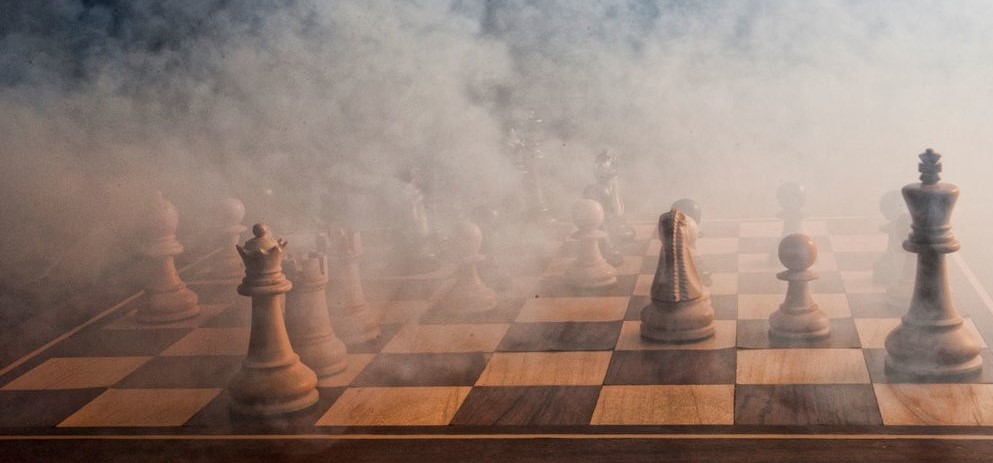


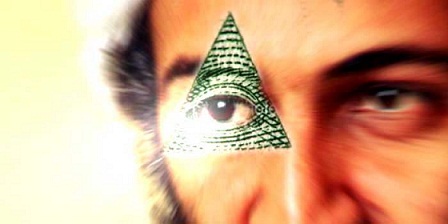
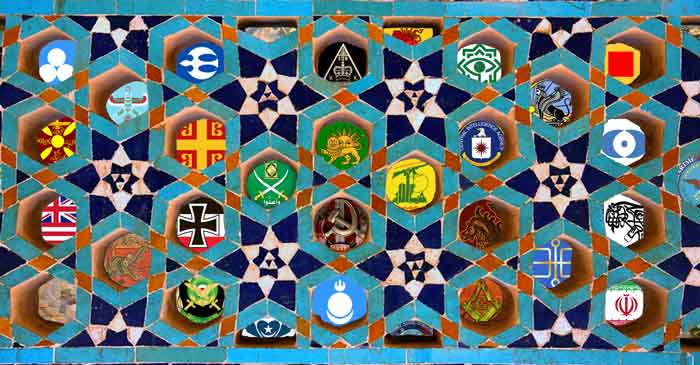
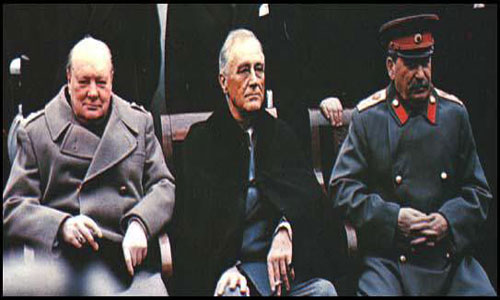

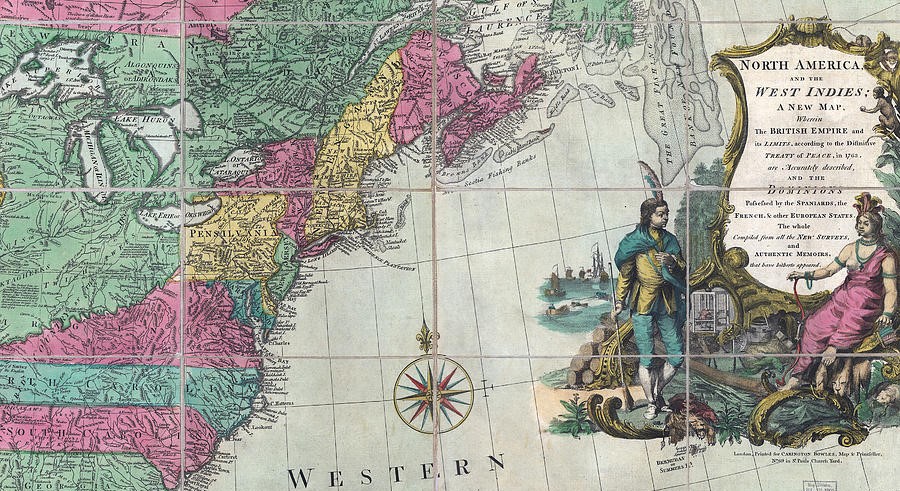
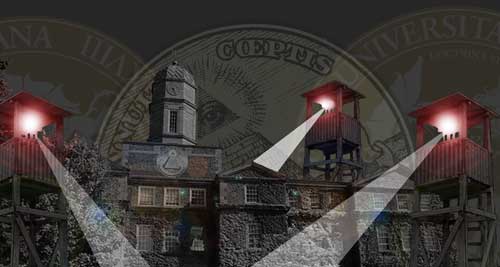
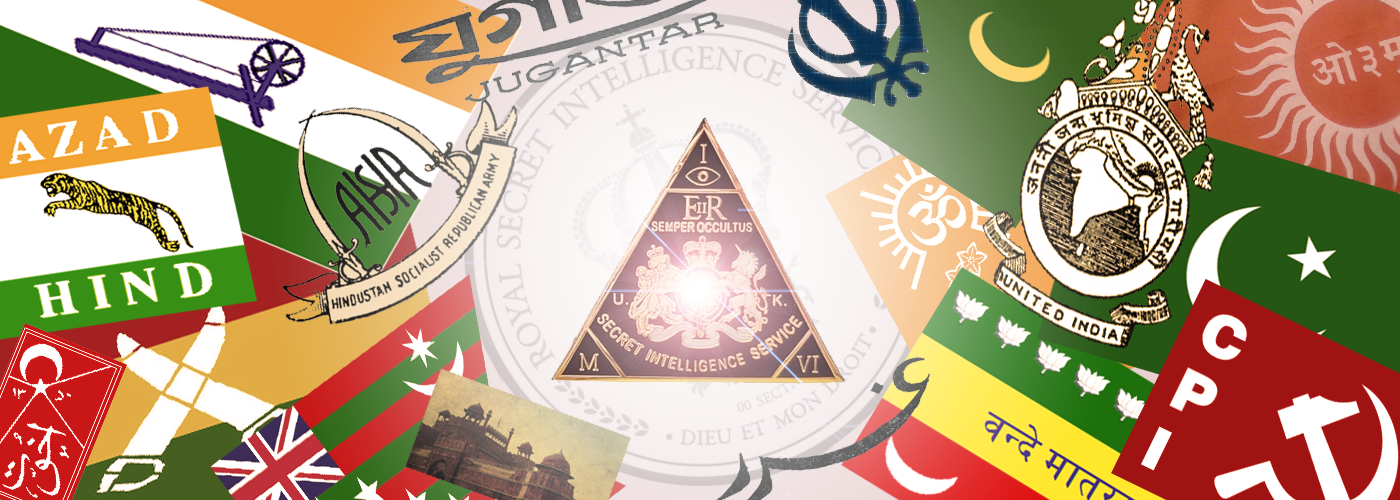
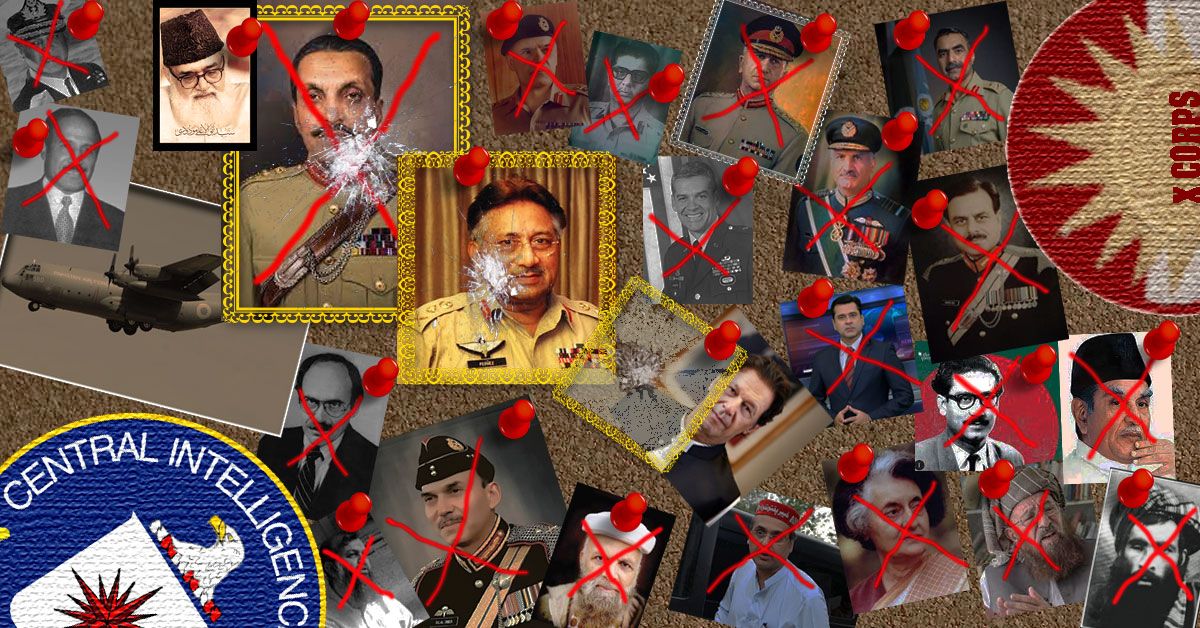
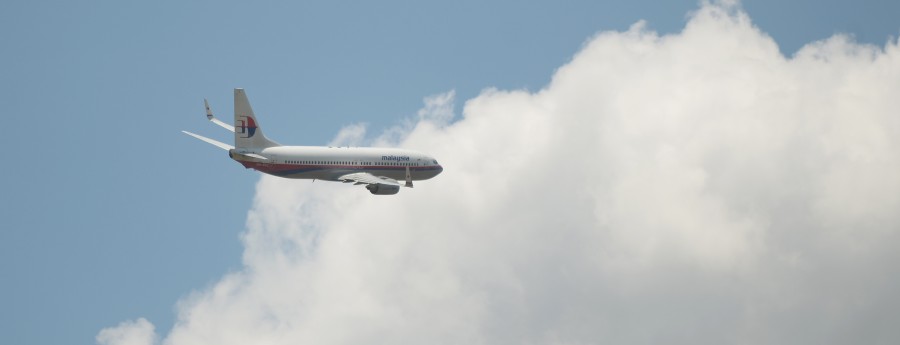
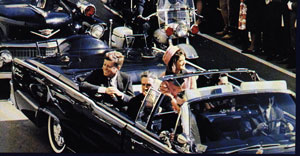

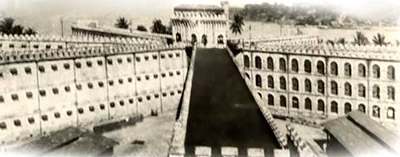

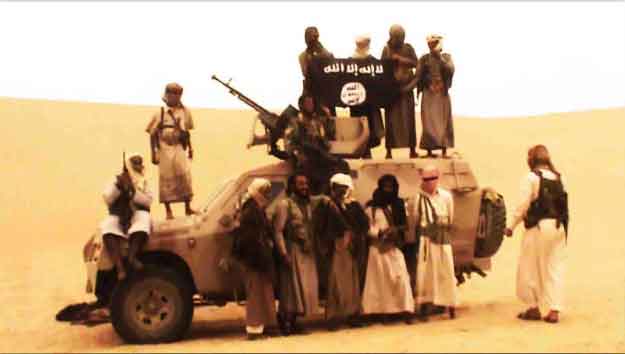
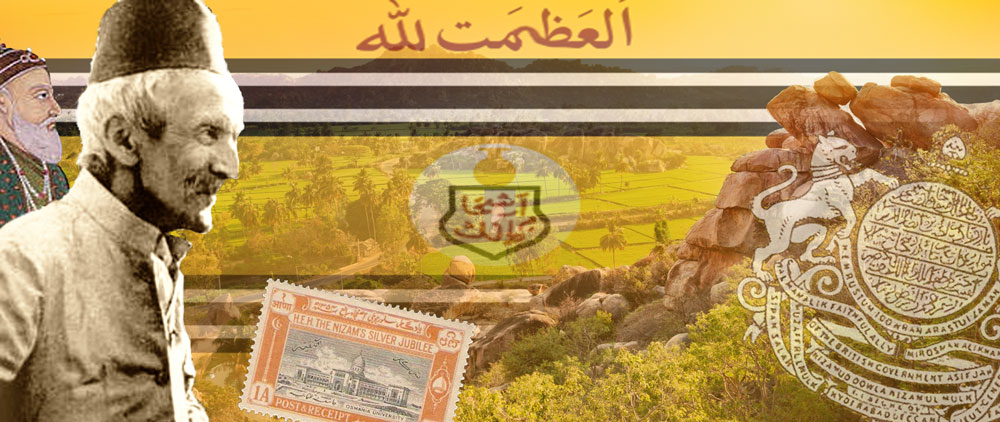






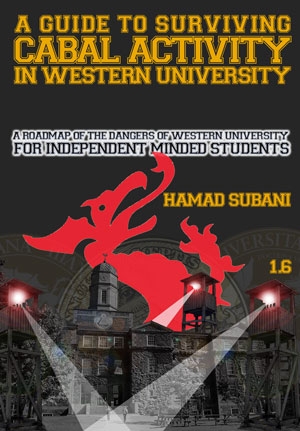
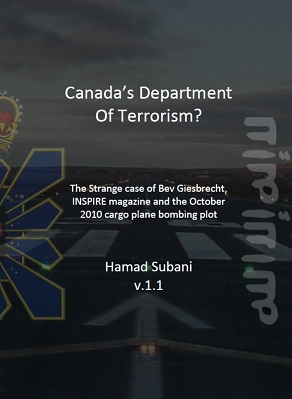
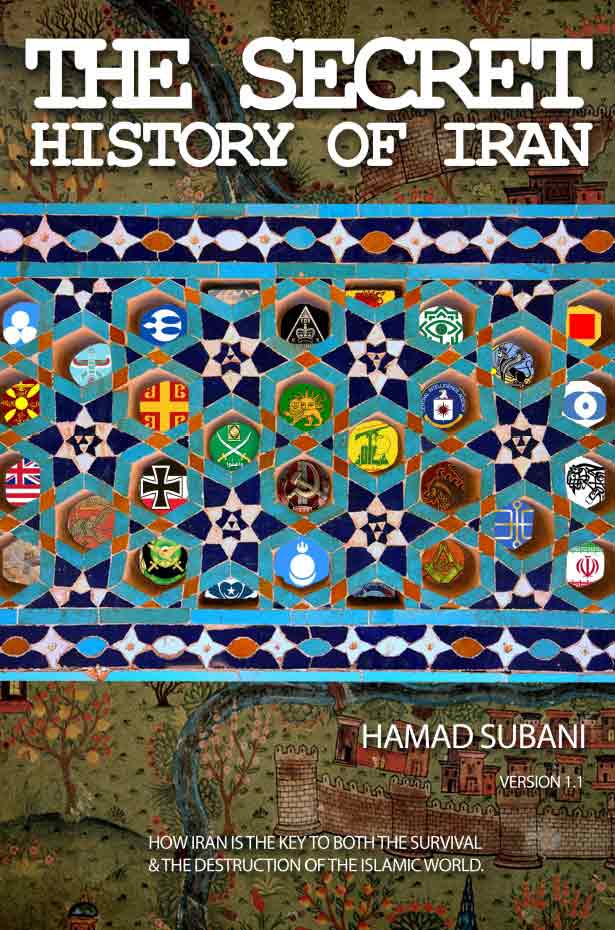
The First Freemason Lodge in India was not at the Gosha Mahal Baradari Hyderabad. It was a grand building built by teh Last Qutub Shahi ruler Tana Shah in 1682 and was donated to teh freemason by Nizam in 1872.
The first lodge was established for the British Military and other authorities in India in 1728 at Fort William Calcutta called Star of the East.
The doors of freemason were opened for Indians in 1775, when Nawab Umdatul Umra of Carnatic opened first lodge in Trichonopoly, in South India.
Please refer Freemasonry in India
https://linfordresearch.info/fordownload/World%20of%20Fmy/Nairn%20India.pdf
Shoukat Ali Khan Hyderabad India
Thanks for this.
The grave of Aurangzeb is in the premises of a Dargah in Khuldabad near aurangabad. there is no tomb over it nor even a structure.
Taj Mahal like structure is in aurangabad, whichis around ten miles away from his grave.
So what you have mentioned about his grave is not correct.
Thank you for the clarification. The Taj Mahal like structure is actually the tomb of his wife. I have corrected.
Gosh !!! what an intellectual article . Very first time I got to read something eloborative on Shah Waliulllah and the reason of his invitation to Abdali. You are incredibly remarkable in presenting the profoundness and minute details on the subject. Are you a historian or have you written any books.
Share your articles or suggest some books on historical India from Muslim rulers point of view. Had enough of Aurangazeb bashing and Muslim rule criticism nowadays around. So was wondering the justification from the other side.
Please do share.
You could take a look at my book The Secret History of Iran. Since the history of medieval Iran is linked to that of India, it does contain a lot of previously undisclosed information on the Mughals and other Indian dynasties as well.
Qasim Rizvi did not escape , he did his prison term and was relocated to Pakistan by the Indian government . I find lots of unsubstantiated facts in your write up.
This is not the official history of Hyderabad State, it is the Conspiracy History of Hyderabad State, where we try to fill in the blanks in the official narrative. Its not for everybody. Do you really think Qasim Rizvi would be let go so leniently?
Hi, certainly, history of Hyderabad is enticing. I have come across a novel “Theft of Nizam’s Gold” by a writer from Hyderabad, Naser Banaqeeb who presented the life of Nizam in a wonderful way. The novel is a gripping tale of bygone era of Nizam, love and mystery of the gold stolen – the history doesn’t have any record of it. Yes, the gold stolen from Nizam’s treasure has no mentioning in any books. But, the author described the same in an artistic manner. The novel is available online at amazon.
Dear Abraiz Ali Khan,
I am based in Mumbai and an avid reader of “authentic” historical books.
I would be much obliged if you could share with me any such books in your possession, including “Tragedy of Hyderabad”.
My contact details are: iyerpnpl@gmail.com
Warm regards,
Arvind Iyer
Hello Mr. Arvind. This is the book I have mentioned: https://www.goodreads.com/book/show/18360701-tragedy-of-hyderabad
I found it in a Sunday, second-hand book market. Currently, this book is with my brother who lives in Canada. Sorry for not being able to share it.
Dear Mr. Abraiz,
I have a nephew in Canada whom I will be meeting at a family function in October. If you can share with me the contact details of your brother in Canada, my nephew can coordinate with him and photocopy the book and hand it over to me when we meet.
Incidentally I am in Hyderabad on Monday June 25th. I would be very happy to meet with you.
Once again my email id is: iyerpnpl@gmail.com
Warm Regards,
Arvind Iyer
Pl visit Haziq and Mohi a book store near Charminar , they have copies . Picked up my copy of Tragedy of Hyderabad and other books on hyderabad from there . The store finds a mention in The Last Nizam by Jhon Zubrcki and is regularly frequented by history buffs , most notable being William Dalrymple , he has given a beautiful account in The White Mughals of William Kirkpatrick the British resident during the end of the 18th century and his affair with Khai un Nissa great niece of Aristu Jah the prime minister at Nizam Ali Khan’s court . He eventually ended up marrying her and converted to Islam . Most of his research work was carried out by literature provided by Haziq and Mohi .
Hello Mr Iyer , you can get the book and many other out of publication books on Hyderabad at Haziq and Mohi book store near Charminar . The store finds a mention in the Last Nizam by Jhon Zubrycki and is frequented by history buffs from India and abroad , most notable being William Darlymple whose book The White mughals revolves around the stories of William Kirkpatrick the british resident at the end of 18th century in Hyderbad and his affair with Khai un Nisa the great niece of Aristu Jah the prime minister of Nizam Ali Khan , which he later marries and converts to Islam .
You may also be interested in The Destruction of Hyderabad by Abdul Gafoor Abdul Majeed Noorani. No idea where to find it though.
Its overwhelming to read this..present day hyderabadis are so ignorant about their past. . I wish many of them could read this
Assalaamualaikum. I am a citizen of Hyderabad itself. Born and brought up here. I do have an interest in our history as well. You have written a very engaging piece of research. Do accept congratulations for it. As it happens, there are a few points that I do disagree with. One is your saying that venerating graves is an “Islamically abhorrent practice.” But maybe you subscribe to one of those sects that see graves as idols, so let it pass. I don’t need to tell you that scholars have compiled voluminous works on this subject. Read them if you will.
The other point that raises my hackles is the flippant description of Jamia Nizamia. As it happens, I am closely related to this institution. All my teachers of Islamic sciences have studied at this institution. Your description of it stems of ignorance or, if you will excuse me for saying so, your prejudice against those venerate graves. Jamia Nizamia was started in 1876 AD. Its founder, who was the teacher (Ataleeq as they called them then) of the 6th and 7th Nizams, passed away in 1917. If you would look into the history of Jamia Nizamia and its scholars, you would see many un-Islamic activities and trends being checked by them. Keep in mind that it was a nascent institution without any power of enforcement. Which means that Jamia Nizamia could only tell that something was wrong and must be stopped, but could not actually go out and stop them. Frankly, there are many firsts the credit of whom goes to Jamia Nizamia and more specifically its founder, Imam Anwarullah Farooqui (May Allah shower His Mercy on him). Hyderabad was the only state to have departments of Qazaath – where marriages, divorces, etc. were registered, the only state to outlaw reprehensible Hindu customs like Murli, etc., the only state to have standardized weights, possibly the only state or one of the very few which trained people with a standardized syllabus to administer basic Islamic laws to the populace. The State Central Library (earlier known as Asafjahi Library) was established at the behest of Shaykh Anwaarullah. No, they were nor politically active. As I said, it was a nascent institution, just started. Maybe in time, if Hyderabad state would have been there, they would have played a greater role.
The best part about your piece is that you give sources. I do have some of the books like Tragedy of Hyderabad with me. I will surely read up as much as I can the source books that you quote and see your point of view in much broader and richer detail.
Best of luck for your future research.
Assalaamualaikum.
Thank you for the additional info on Jamia Nizamia. While I do accept that Jamia Nizamia did in fact play a positive role, I believe that the fact that it was an official institution limited and hindered its ability to fulfill its role in a more wholesome manner. For example, they could not critic the sponsorship and inclusion of Shiite practices of later Nizams. And by and large, they did fail to enlighten the Muslim population, as evidenced by the level of ignorance and the incorporation of non-Islamic practices into Islam by the common people. If The Powers That Be were serious about Islam, they would have supported it more thoroughly, perhaps with a budget much bigger than the war aid they gave to Britain. As you mentioned, they started doing so, but it was too little, and too late.
In Islamic history, Muslim groups attain political power only when they start imposing and reinstating the natural order of things. Otherwise nature overcomes them. Towards the end, the Nizams began failing to maintain their holistic connection to the Mystery Saint.
Dude you are awesome. Where you been?
Do you have any recommendation for occult conspiracy sites with muslim perspective?
The main reason why it’s so hard to find this is the cultural lag muslim readers annnd writers have due to the ravages of colonialism westernization and the like. In the world that emerged after ww2 seems the only ticket for indians and muslims to prosper in the west was the sci/tech route. So as a fractured bordered nation, there was not much literal development.
For example most muslims i know go as far as saying 911 was ‘possibly’ a conspiracy and that Kanye or whoever is a free mason, and that’s as far as it goes. They will never include the saudis or big banks or the company they work for.
Anyway look forward to reading your next masterpiece.
The only “Islamic” Conspiracy website that I find worth a mention is that of David Livingstone> http://www.conspiracyschool.com/